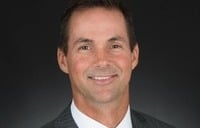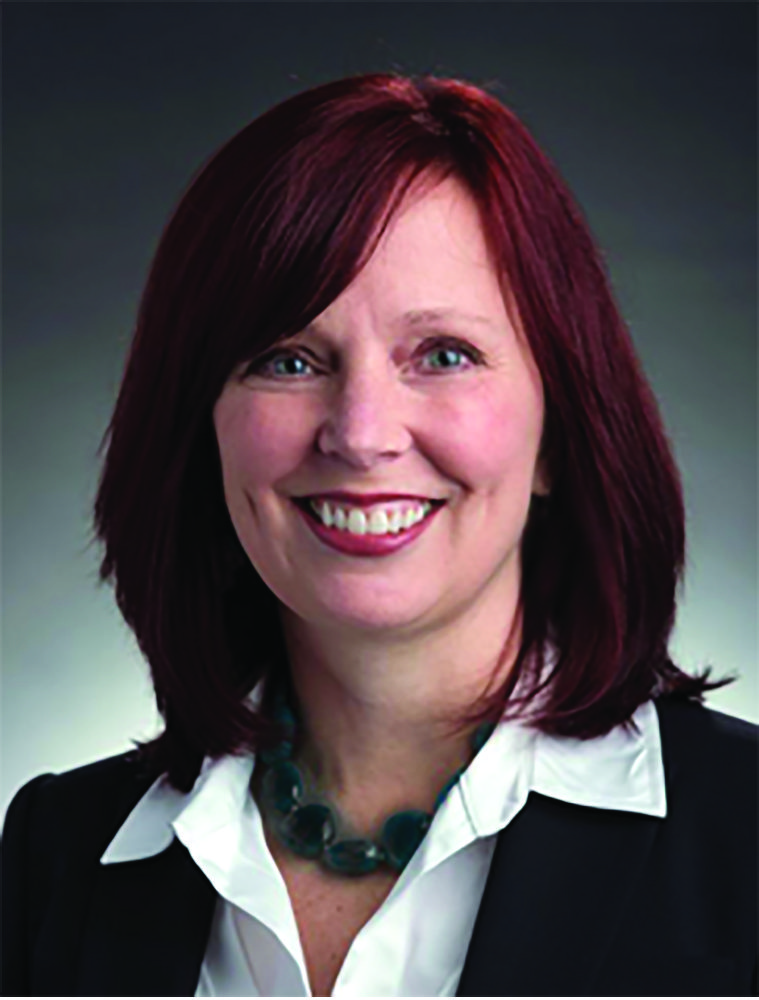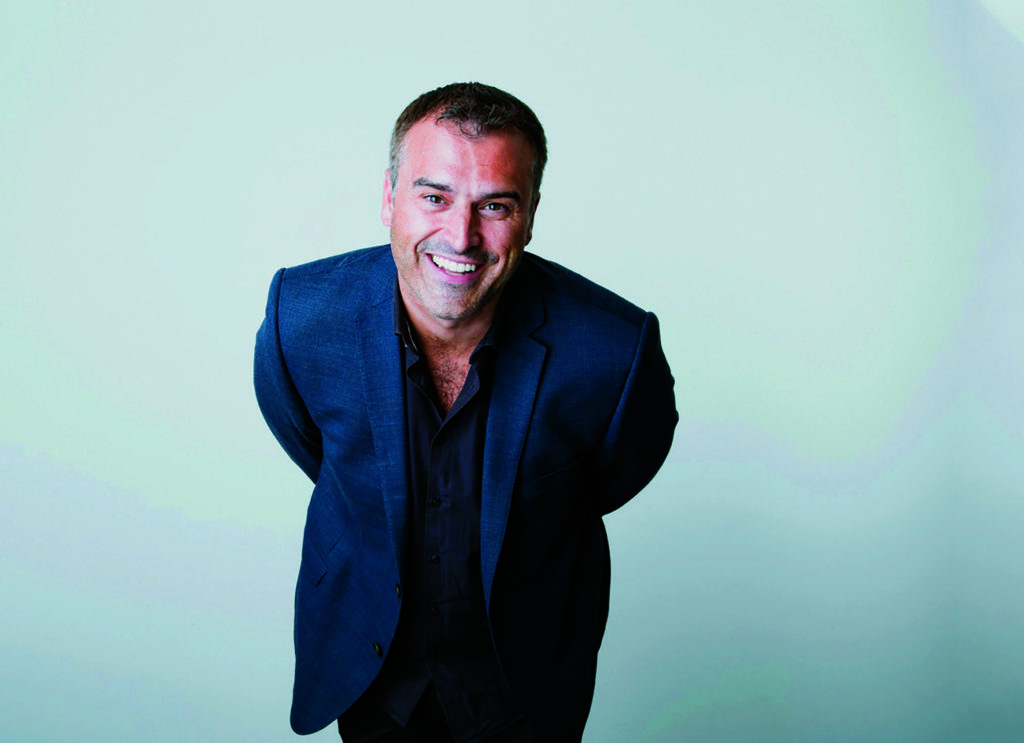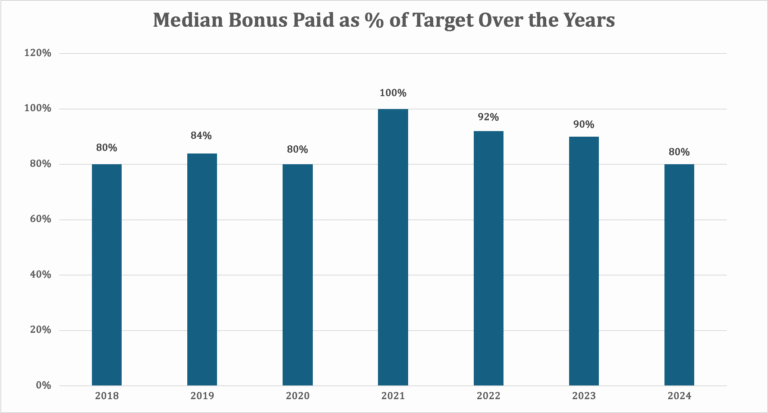
It didn’t take long for Paul Miller to realize that his people were at a breaking point. Once Covid hit, sales at Questex, which earned the lion’s share of its revenues from in-person conferences and trade shows, cratered. By mid-2020, staffers were working long hours as the company pivoted to online events.
“People were bursting into tears on calls with me,” says CEO Miller. And in his daily six a.m. virtual “war-room” meetings with the executive team, Miller learned he wasn’t the only one having that unsettling experience. “It was like, ‘Oh, that happened to you, too?’”
So he started checking in with people, taking advantage of the proximity that online tools afforded. “I could virtually walk the corridors and tap someone on the shoulder, where before Covid, that would have taken flights and traveling around the world,” he says. “It became apparent to me that people were really struggling.”
Miller says the crisis wasn’t so much the cause of a problem as a wake-up call to a more systemic issue: “The pandemic exposed the real cracks in the system, and it became clear that we were not doing some things we should have been doing [for our people].”

To be sure, the isolation, fear and seismic change that Covid ushered in ratcheted up the anxiety and fatigue, “but these mental health needs were around long before the pandemic,” says Melissa Howell, CHRO for Kellogg’s.
So were burnout and workplace malaise. The World Health Organization classified “burn-out” as a workplace syndrome in 2019, in the 11th Revision of the International Classification of Diseases. It had already become clear that the technology enabling rapid advances in innovation was also virtually shackling employees to their desks long after they’d left the office. And the kind of rapid transformation that companies across industries have been doggedly pursuing has been hard on the human psyche, says Andrew Shatté, Ph.D., chief knowledge officer and cofounder of meQuilibrium, which offers a tech-based approach to companies seeking to reduce burnout among the ranks. “You can’t put people through this kind of constant change and expect them to come out okay on the other side.”
The data certainly seem to show our collective mental health in some decline, while the expenses to cope with it soar. Spending on mental health treatment and services reached $225 billion in 2019—up 52 percent since 2009, according to an Open Minds Market Intelligence Report. Depression alone is estimated to account for $44 billion in losses to workplace productivity, according to research from Tufts Medical Center and One Mind at Work. Drug and alcohol abuse was already rising steadily, but the Centers for Disease Control and Prevention reported that as of June 2020, 13 percent of Americans said they started or increased substance use as a way to cope with the stress, and overdoses have spiked since the onset of the pandemic. The U.S. suicide rate in 2020 was 30 percent higher than in 2000—and according to the U.S. Bureau of Labor Statistics, 2019 saw 307 workplace fatalities by suicide, the highest level on record.
When the data is segmented by age, it’s clear that younger generations are suffering most. Millennials are worse off than Gen X, and Gen Z is at greatest risk, according to WTW (formerly Willis Towers Watson): 65 percent of that cohort believe they suffer from anxi-ety and depression. “That’s our future workforce,” says Regina Ihrke, a WTW senior director and health and wellbeing leader. “It’s a whole new world we’re about to walk into with that group of people—and we’re all fighting for them from a talent perspective.”
In fact, it is the two youngest generations driving the recent spike in turnover. Whether one calls it the Great Resignation, the Big Quit, the Great Reshuffle or some other moniker, “the talent war is over—and the talent has won,” says Joe Brady, CEO, Americas for workplace solutions firm The Instant Group.
For Miller, the cost of replacing frustrated employees is enough incentive to spend money to keep them happy. “You have to have the KPIs in place on that,” he says. “What does it cost to lose an employee? What if five people leave a department—what is the cost of that? You quickly start to realize this might be worth the investment.”
Quantifying ROI in the area of wellness spend can seem, on its face, a bit squishy. And the notion that companies should be responsible for employees’ mental health is relatively new; most CEOs today—the vast majority either Boomers or Gen X—grew up in a corporate culture rife with stigmas around depression, addiction and other mental health challenges, and one that encouraged people to leave their personal problems at home.

But as times and expectations have changed, more and more leaders are seeing a direct link from promoting mental health and wellness to profitability. “It’s crystal clear to me that if we’re not investing in our people and helping and supporting them, it’s going to hurt our overall bottom line,” says Dan Dye, CEO of flour milling and ingredient company Ardent Mills. “There’s just no question in my mind about that.”
Even companies that have gotten religion are still playing catch-up. According to a recent WTW survey, while 86 percent of employers said that mental health, stress and burnout are a top priority, nearly half (49 percent) had not yet formally articulated a wellbeing strategy for their workforce, and only a quarter had already adopted a wellbeing strategy.
Those that don’t get something in place may miss an opportunity to contain smaller bumps that, left to fester, become big, costly problems. “It’s the day-to-day stress that piles up and then turns into sleep problems, which fuel even more problems, like burnout, which will very often turn into depression,” says Patti van Eys, Ph.D., a licensed clinical psychologist with Pathways at Work, which helps companies address mental health and wellness. “So, now we’ve got clinical depression, which changes the neurochemistry of the brain dramatically, and now it’s a very real and serious illness that needs aggressive treatment.”
Fortunately, there is a lot companies can do right now to release the pressure valve and create a culture that is more inviting to talent and enables them to work more productively.
In describing how our culture views mental health issues, Shatté, who played rugby in his native Australia, offers an analogy to sports. “If I broke my arm [in a game], that would be seen as a badge of honor,” he says. “But if I went to the coach and said, ‘I’m clinically depressed,’ that wouldn’t be seen in the same light. We’re still very much in that place.”
CEOs can change that, says Accenture North America CEO Jimmy Etheredge. “Mental health issues remain shrouded in stigma, so it’s not enough to merely offer programs—the onus is on leaders to lead by example and show people it’s okay to be their authentic selves. Leaders need to demonstrate they are real people, and that means underscoring that, sometimes, it’s simply okay to not be okay.” For some CEOs, getting that personal with staff will be challenging, but Etheredge notes that “authentic, effective leadership requires a certain level of vulnerability.”
Dye, who shared his personal struggle during the pandemic with employees in a weekly email, has made “squashing the stig-ma” a corporate goal. “[That means] taking away the idea that there’s something bad about getting help or support and helping people to just kind of normalize it, because we are all having challenges.” His company added a new category to their safety training, which already had rigorous components around food safety and physical safety. “We added the dimension of emotional and psychological safety, meaning Ardent Mills is a safe place to talk about your challenges, and our safety value was there to help and protect our people,” says Dye.
Companies that don’t work on removing the stigma may find their well-intentioned wellness offerings underutilized. “People are worried about confidentiality. They’re worried about the impact on their careers,” says Shatté. “One of the best ways to present it is a universal primary prevention kind of thing—that we recognize that every single employee can benefit from becoming mentally stronger, more resilient. Every team can benefit from developing the skills of agility and the capacity to pivot, and every organization can develop a culture that’s more conducive to resilience.”
From relaxation and meditation apps like Headspace to in-office yoga classes and “quiet spaces” to virtual counseling and treatment, offerings run the gamut. Those companies with a large, diverse workforce typically offer a variety of options because, as Accenture’s Etheredge says, “tackling the issue of employee mental health can’t be a one-size-fits-all approach.”
The consulting firm teamed up with Talkspace to offer confidential virtual therapy to its 65,000 U.S. employees and provides subscriptions to the Calm app for daily mindfulness practices, sleep improvement and anxiety reduction, and Wysa, a 24-7 chatbot “that’s like a mindfulness coach and therapist in your pocket to help manage stress anytime, anywhere,” says Etheredge, who says he is “on a mission” at his firm “to make it okay to not be okay.”
Providing access to treatment, even a handful of sessions a year, can help productivity. “We know from a research standpoint that therapy and emphasis on mental health can increase performance expectations by as much as 41 percent,” says Rachel O’Neill, Ph.D., a licensed Talkspace therapist.
“We also know that individuals who have access to mental health resources are less likely to utilize sick time and days off, and more likely to be productive employees. Also, about 60 percent of employees believe that an atmosphere that prioritizes mental health is a reason to stay in the workplace.” (See sidebar below for examples of resources.)

Offerings don’t have to be expensive. Media agency Red Havas began offering a “rejuvenation hour” once each week, dedicated to mental health, and employees can use it any way they like. (Rather than HR, the idea came out of a Shark-Tank-style pitching session, called The Red Retreat, where employees can propose programs they’d like to see at the company.) To emphasize his support of the program, CEO James Wright sent out an email for the first six weeks talking about what he had done with his own hour. “Whether it was going running in Central Park, or ‘Hey, I listened to this podcast today,’” he says. “Employees have got to see that these initiatives are being championed, beyond words on a page, by the CEO, the C-Suite, senior management.”
The most important thing, says Miller, is to do something, so that employees see you’re taking it seriously. “Focus on the things you can do quickly that are meaningful and package them up to employees so they know you’re listening—they can be low or no cost in terms of raw dollars—and then use those as a platform to listen and survey employees and figure out what they’re missing or really want,” he says, adding that CEOs should solicit employee feedback constantly. “There’s no bad news that comes out of employees telling you the truth. When you’re in the meetings and they’re all nodding their heads and saying, ‘This is the best thing since sliced bread,’ and then they leave and say, ‘What’s this guy smoking?’—I’d rather know it than not.”
Brady agrees. “You have to be a good listener and not be too fearful. It means saying, ‘Hey let’s test something,’ and if it doesn’t work, we’re going to course-correct. But in the meantime, let’s make a good, honest attempt.”
Sometimes, you’ll have to disappoint them. Miller’s veteran employees wanted him to reinstate a 401(k) match that his predecessor had discontinued—but the company was not in a sound enough financial position to do “That was a big complaint they had,” he recalls. “I had to say, ‘That’s a five-headcount decision for me. I don’t want to lose five people.’ And they said, ‘Oh, no, don’t do that.’”
But the fact that he was listening made a difference—and last December, when the balance sheet had improved and stabilized, he did bring the match back, which went a long way toward building trust with employees. A recent report from Talkspace and Harris Poll confirms that follow-through matters: Two out of every three U.S. employees considering leaving their jobs agreed that their employer had not come through on their early pandemic promises to focus on mental health.
If you’re not sure what your employees want, don’t be afraid to experiment, says Wright. “I’d rather fail fast with an initiative and then come up with a new one and try it out. I think, as a CEO, it’s been okay over the last couple of years to say, ‘I don’t have all the answers,’” he says. “You’re hard-wired as a CEO to have all of the answers, to just have that brilliant kind of response every time someone asks you a question. But I think it’s actually built trust to say, ‘You know what? I don’t know right now.’”
Miller also suggests looking at what your partners are doing and what healthcare providers are offering. “Some of these things are no cost to you, but they have enormous value to your people.” One of those low-cost offerings is simply a sense of purpose around the work they’re doing, says van Eys. “That’s something I’m hearing a lot—people are looking for the companies where they can feel like they’re making a difference, that their voice is heard, that their company cares about them as a person, not just as a cog in the wheel.”
Dye says connecting purpose to the work stemmed some of the burnout at his flour mills, where turnover has been the highest. He instituted a “Donuts with Dan” program, where he meets with new plant hires. “It’s a chance for me to welcome them to the company and just tell them a little bit about our vision and our values, and the importance of the work they do to produce these critically important food ingredients that help to feed people every day,” says Dye. “Because when people really start to understand our values and the vision and mission of the organization, the why of the work that we do, that tends to get a little bit greater stickiness.”

Like any initiative you want to stick, it can’t be a one-and-done exercise or a program that the whole organization isn’t on board with. At Safeguard, a provider of global payroll and employer of record services, managers are now given specific training on how to connect with remote employees and, if needed, recognize the signs of distress and burnout virtually. They’re also trained “to have some of that emotional intelligence that’s needed to be able to support their teams through,” says CEO Bjorn Reynolds. “At every leadership call, every town hall, we have the same message reminding people that it’s okay not to be okay.”
Miller notes that his company has bumped EQ high on the list of criteria for hiring. “All our hires in the past three years have been culturally relevant first, competent second. You can teach people the job, but not the culture.”
CapGemini walks the talk by including “compassion, integrity, empathy and inclusion” as leadership competencies that impact executive pay. “Our CEO, Aiman Ezzat, has put talent front and center on everyone’s agenda, so it’s not squishy for us,” says CHRO Tecla Palli-Sandler. “In this market, you really have to be values-based, because people can go somewhere else. It’s really not just about the money.”
CEOs also need to make sure middle managers are on board; if not, then regardless of what the chief says, the initiative likely won’t take off. When Riddle, for example, measured participation rates at Howard’s yoga and meditation sessions, he noticed that after an initial bump at the beginning, attendance fell off significantly. He asked HR to solicit employee feedback and learned that while employees appreciated the offering, “they didn’t feel like their department manager or local leader really endorsed it,” says Riddle. “So we discovered we had to start urging and teaching our department heads or store managers, ‘Hey, you need to participate. This may not be your cup of tea, but why don’t you show up—you may like it. And sometimes, as a leader, you have to help people embrace things.’”
Given that most companies are still working out their offerings, those ahead of the benchmark will have a competitive edge in a cutthroat talent market and good return on the investment. “Expectation [from employees] has lifted to a new level we haven’t seen before,” says Reynolds, noting that retention will require an investment in wellness. “If that means it shaves a point or two off of your profitability, then so be it. All I can say is, last year was a very successful year for us from a commercial perspective.”
For those worried about the focus on mental health and wellness dissipating once the pandemic recedes, Etheredge says that it’s not going anywhere. “The one silver lining of the pandemic is that mental health is finally moving out of the shadows and into public discourse,” he says. “Companies have realized that neglecting mental health is simply not an option anymore, and that the attention and resources given to address it are here to stay.”
A look at how some early adopters are attempting to shore up employee sanity.
• Howard’s, a Southern California independent retailer of luxury appliance, began offering access to guided meditation during the workday—morning and afternoon, and for the warehouse group, evening sessions. Last year, they added yoga sessions during work hours as well.
• Ardent Mills recently brought in a licensed therapist to speak to the company, virtually, about mental health in the workplace. More than 300 of the company’s 2,500 employees tuned in volun-tarily. “That showed us this is top of mind for people,” says CEO Dan Dye.
• At Kellogg’s, in addition to increasing mental health visits from five consultations to 12 per life event per year, the company also recently introduced its own Mental Health First Aid certification, known as Lean on Me, which teaches employees how to identify, understand and respond to signs of mental illness and substance use disorders. “To date, we have certified over 100 employees,” says CHRO Melissa Howell.
• Safeguard Global is restoring sanity by empowering employees to make their own schedules. “We call that ‘Work in any way,’” says CEO Bjorn Reynolds, who has changed the model to an outcomes-based approach. The company found that employees will happily work three 12-hour days if it means they get two days off, and so long as the employee achieves the agreed-upon outcomes, it works. “As a business, you have to say, ‘How do I evolve?’—even if it may cost me some bottom line to start with.”




Chief Executive Group exists to improve the performance of U.S. CEOs, senior executives and public-company directors, helping you grow your companies, build your communities and strengthen society. Learn more at chiefexecutivegroup.com.
0

1:00 - 5:00 pm
Over 70% of Executives Surveyed Agree: Many Strategic Planning Efforts Lack Systematic Approach Tips for Enhancing Your Strategic Planning Process
Executives expressed frustration with their current strategic planning process. Issues include:
Steve Rutan and Denise Harrison have put together an afternoon workshop that will provide the tools you need to address these concerns. They have worked with hundreds of executives to develop a systematic approach that will enable your team to make better decisions during strategic planning. Steve and Denise will walk you through exercises for prioritizing your lists and steps that will reset and reinvigorate your process. This will be a hands-on workshop that will enable you to think about your business as you use the tools that are being presented. If you are ready for a Strategic Planning tune-up, select this workshop in your registration form. The additional fee of $695 will be added to your total.

2:00 - 5:00 pm
Female leaders face the same issues all leaders do, but they often face additional challenges too. In this peer session, we will facilitate a discussion of best practices and how to overcome common barriers to help women leaders be more effective within and outside their organizations.
Limited space available.

10:30 - 5:00 pm
General’s Retreat at Hermitage Golf Course
Sponsored by UBS
General’s Retreat, built in 1986 with architect Gary Roger Baird, has been voted the “Best Golf Course in Nashville” and is a “must play” when visiting the Nashville, Tennessee area. With the beautiful setting along the Cumberland River, golfers of all capabilities will thoroughly enjoy the golf, scenery and hospitality.
The golf outing fee includes transportation to and from the hotel, greens/cart fees, use of practice facilities, and boxed lunch. The bus will leave the hotel at 10:30 am for a noon shotgun start and return to the hotel after the cocktail reception following the completion of the round.